Rob Bignell's Blog, page 345
February 2, 2014
Five great quotations about plots
“Not every  story has explosions and car chases. That’s why they have nudity and espionage.” – Bill Barnes and Gene Ambaum
story has explosions and car chases. That’s why they have nudity and espionage.” – Bill Barnes and Gene Ambaum
“I don’t praise plots as accurate representations of life, but as ways of keeping readers reading.” – Kurt Vonnegut, Jr.
“The image that fiction presents is purged of the distractions, confusions and accidents of ordinary life.” – Robert Penn Warren
“Plotting is like sex. Plotting is about desire and satisfaction, anticipation and release. You have to arouse your reader's desire to know what happens, to unravel the mystery, to see good triumph. You have to sustain it, keep it warm, feed it, just a little bit, not too much at a time, as your story goes on. That’s called suspense. It can bring desire to a frenzy, in which case you are in a good position to bring off a wonderful climax.” – Colin Greenland
“Plotting isn’t like sex, because you can go back and adjust it afterwards. Whether you plan your story beforehand or not, if the climax turns out to be the revelation that the mad professor’s anti-gravity device actually works, you must go back and silently delete all those flying cars buzzing around the city on page one. If you want to reveal something, you need to hide it properly first.” – Colin Greenland
Need an editor? Having your book, business document or academic paper proofread or edited before submitting it can prove invaluable. In an economic climate where you face heavy competition, your writing needs a second eye to give you the edge. I can provide that second eye.
Related articles
 Think of your story as if a stage production
Think of your story as if a stage production Five Great Quotations about the Power of Writing
Five Great Quotations about the Power of Writing Five Great Quotations about Characters
Five Great Quotations about Characters Use appendix to add extra info to your book
Use appendix to add extra info to your book Five great quotations about poetry
Five great quotations about poetry
February 1, 2014
Editing client releases ‘Son of a Preacher Man’
An editing  client of mine, Missouri’s former Speaker of the House, Rodney Jetton, has released his first book, “Son of a Preacher Man.” The autobiography traces Jetton’s formative experiences while growing up during the 1970s and 1980s and examines what growing up as the son of a preacher is really like. The book is available online in paperback and ebook.
client of mine, Missouri’s former Speaker of the House, Rodney Jetton, has released his first book, “Son of a Preacher Man.” The autobiography traces Jetton’s formative experiences while growing up during the 1970s and 1980s and examines what growing up as the son of a preacher is really like. The book is available online in paperback and ebook.
Need an editor? Having your book, business document or academic paper proofread or edited before submitting it can prove invaluable. In an economic climate where you face heavy competition, your writing needs a second eye to give you the edge. I can provide that second eye.
Amazon.com WidgetsRelated articles
 Editing client releases first near-future novel
Editing client releases first near-future novel Editing client releases self-help book
Editing client releases self-help book Editing client releases novel based on true story
Editing client releases novel based on true story Editing client's latest novel hits top 25
Editing client's latest novel hits top 25 Five Great Quotations about Business of Writing
Five Great Quotations about Business of Writing
January 31, 2014
How to land a television or radio interview
A great  way to promote your book is through a radio or television interview. Most likely the program you land on boasts a loyal audience that’s highly interested in your book’s topic. This can quickly translate not just to additional book sales but requests to appear on other, similar programs.
way to promote your book is through a radio or television interview. Most likely the program you land on boasts a loyal audience that’s highly interested in your book’s topic. This can quickly translate not just to additional book sales but requests to appear on other, similar programs.
The first step in arranging such interviews is to find those programs that would be most interested in your book. Look for shows that cover the kinds of topics that your book addresses. For example, if your nonfiction book addresses mental illness, seek out radio programs that regularly have guests who speak on the topic. If your novel is set in a specific city, such as Cleveland, Ohio, then Cleveland is the perfect place to seek a television or radio interview. Typing “radio program” AND “mental illness” into a search engine or “Cleveland radio, television stations” will quickly give you a list of potential shows.
The next step is to actually pitch yourself to these shows. Begin by emailing to them a media kit and a pdf of your book with a cover letter introducing yourself and asking if they would be interested in interviewing you. In your cover letter, describe why your appearance would benefit their program, such as explaining how your book will:
g Resonate with the show’s target audience
g Bring additional listeners as you will promote the interview in your social media platforms, giving free advertising to the show
g Increase the likelihood that your fans likely will tune into the program, increasing the station’s audience share
In addition, include a list of articles and positive reviews about the book, showing the book is of high interest.
As part of the pitch, give potential dates that you could do this presentation. Give plenty of lead time so you can promote your interview via your social media.
While most programs will be interested, do expect rejection. Don’t fret about it; all it means is the radio and television show simply wasn’t convinced by your pitch. Go back and refine your media kit and cover letter and keep at it.
One additional note: With the Internet, also think about podcasts in addition to radio and television shows. Podcasts have very small audiences, but if you find one that covers the topics of your book, the audience will be extremely interested in you. Remember: Your book will sell better among a hundred interested people than a thousand who are disinterested.
Need an editor? Having your book, business document or academic paper proofread or edited before submitting it can prove invaluable. In an economic climate where you face heavy competition, your writing needs a second eye to give you the edge. I can provide that second eye.
Related articles
 Create book sell sheet for pitching book
Create book sell sheet for pitching book Use YouTube to promote your book
Use YouTube to promote your book
January 30, 2014
Editing client publishes alcohol addiction book
A recent 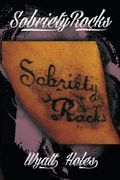 editing client of mine, Wyatt Holes, has published his first book, “Sobriety Rocks.” The book describes how Wyatt became addicted to alcohol, the downward spiral of addiction, and ultimately his successful recovery. If you’re suffering from alcohol addiction or know of someone who is, “Sobriety Rocks” is the book for you: Without being preachy, you’ll receive the encouragement to overcome this ailment. It’s available online in paperback, hardcover or ebook.
editing client of mine, Wyatt Holes, has published his first book, “Sobriety Rocks.” The book describes how Wyatt became addicted to alcohol, the downward spiral of addiction, and ultimately his successful recovery. If you’re suffering from alcohol addiction or know of someone who is, “Sobriety Rocks” is the book for you: Without being preachy, you’ll receive the encouragement to overcome this ailment. It’s available online in paperback, hardcover or ebook.
Need an editor? Having your book, business document or academic paper proofread or edited before submitting it can prove invaluable. In an economic climate where you face heavy competition, your writing needs a second eye to give you the edge. I can provide that second eye.
Amazon.com WidgetsRelated articles
 Making sense of sensuous vs. sensual
Making sense of sensuous vs. sensual Editing client releases self-help book
Editing client releases self-help book
January 29, 2014
Sort it all out: Councilor vs. counselor
Looks like 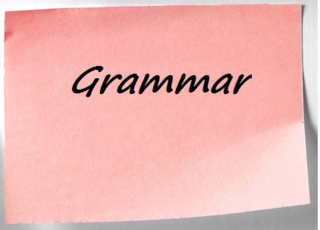 a lot of people could some use some advice on these two words.
a lot of people could some use some advice on these two words.
A councilor is a member of a group, usually in the government: The townspeople re-elected Councilor Brady to the village board just last year.
A counselor provides advice to others, and typically is a psychologist or an attorney (Attorneys often are referred to as “counsel.”): To deal with her depression, Amy sought the help of a counselor.
With that settled, there’s no reason to be guilty of mixing up these two words again!
Need an editor? Having your book, business document or academic paper proofread or edited before submitting it can prove invaluable. In an economic climate where you face heavy competition, your writing needs a second eye to give you the edge. I can provide that second eye.
Amazon.com WidgetsRelated articles
 Making sense of sensuous vs. sensual
Making sense of sensuous vs. sensual Don't scam your readers: Rip-off vs. rip off
Don't scam your readers: Rip-off vs. rip off Which to choose? Pickup vs. pick-up vs. pick up
Which to choose? Pickup vs. pick-up vs. pick up Work off the fat from overwritten descriptions
Work off the fat from overwritten descriptions Delete nulls from your novel, short story
Delete nulls from your novel, short story
January 28, 2014
Editing client releases first near-future novel
A recent 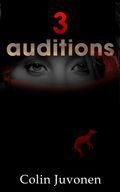 editing client of mine, Colin Juvonen, has published his first novella, “3 Auditions.” The book tells the tale of screenwriter Emory Mann, whose brilliant hacktivist daughter disappears in a coup that initiates the New Republic of America, and is placed on the 10 Most Wanted List. Emory tries to help her but becomes entangled in the web of those who control the New Republic and begins a journey of discovery through a disturbing, near-future United States. The novella is available online as an ebook.
editing client of mine, Colin Juvonen, has published his first novella, “3 Auditions.” The book tells the tale of screenwriter Emory Mann, whose brilliant hacktivist daughter disappears in a coup that initiates the New Republic of America, and is placed on the 10 Most Wanted List. Emory tries to help her but becomes entangled in the web of those who control the New Republic and begins a journey of discovery through a disturbing, near-future United States. The novella is available online as an ebook.
Need an editor? Having your book, business document or academic paper proofread or edited before submitting it can prove invaluable. In an economic climate where you face heavy competition, your writing needs a second eye to give you the edge. I can provide that second eye.
Amazon.com WidgetsRelated articles
 Editing client releases self-help book
Editing client releases self-help book Editing client publishes first fantasy novel
Editing client publishes first fantasy novel Five Great Quotations about Editors
Five Great Quotations about Editors Downgrade your minor characters
Downgrade your minor characters Mimic sounds to appeal to sense of hearing
Mimic sounds to appeal to sense of hearing
January 27, 2014
Avoid writing concealed identity story
One kind 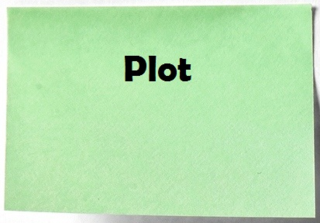 of plot you should avoid is the concealed identity story. This involves keeping the main character’s identity or true nature secret until the end of the story, often the last line. Sometimes called “shaggy dog stories,” this plot is popular among science fiction writers, though it’s turned into a cliché. Probably any reader who has watched old “Twilight Zone” episodes, for example, can recall an episode in which the two people marooned on a planet are named Adam and Eve.
of plot you should avoid is the concealed identity story. This involves keeping the main character’s identity or true nature secret until the end of the story, often the last line. Sometimes called “shaggy dog stories,” this plot is popular among science fiction writers, though it’s turned into a cliché. Probably any reader who has watched old “Twilight Zone” episodes, for example, can recall an episode in which the two people marooned on a planet are named Adam and Eve.
Because we’ve seen such stories in our childhood and because they had a big impact in those formative years, we think they’re cool. They are. The revelation is a surprise, and there’s a certain joy in suddenly recognizing – or rewatching/rereading to identify – all the details and hints given so that the revelatory last line makes sense. But such stories have been written ad nauseum in which the main character turns out to be God or Satan… a dog…a cat…a computer game icon, etc. Except to the first-time reader of such a story, they really aren’t surprising anymore.
A subtype of this kind of plot that you also should avoid writing is the amnesiac story. In this plot, the main character does not know who or what he is, but that surprise is revealed at the story’s end as well.
Need an editor? Having your book, business document or academic paper proofread or edited before submitting it can prove invaluable. In an economic climate where you face heavy competition, your writing needs a second eye to give you the edge. I can provide that second eye.
Amazon.com Widgets
Related articles
 Basic guidelines for devising cliffhangers
Basic guidelines for devising cliffhangers Use broad conflict to set your story in motion
Use broad conflict to set your story in motion Create meaningful settings in your story
Create meaningful settings in your story Constructing your story's main character
Constructing your story's main character Avoid shifting point of view in your story
Avoid shifting point of view in your story
January 26, 2014
Editing client releases novel based on true story
A recent 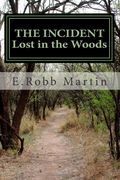 editing of my client, E. Robb Martin, has published his first novel, “The Incident: Lost in the Woods.” Based on a true story, “The Incident” tells the tale of three brothers who chose very different roads in life, only to find over the years that their paths crisscross – with many of those junctions centered on the eldest of them, hot-tempered Jim, who after killing a man in Louisiana spends his days on the run. The novel is available online in paperback or ebook.
editing of my client, E. Robb Martin, has published his first novel, “The Incident: Lost in the Woods.” Based on a true story, “The Incident” tells the tale of three brothers who chose very different roads in life, only to find over the years that their paths crisscross – with many of those junctions centered on the eldest of them, hot-tempered Jim, who after killing a man in Louisiana spends his days on the run. The novel is available online in paperback or ebook.
Need an editor? Having your book, business document or academic paper proofread or edited before submitting it can prove invaluable. In an economic climate where you face heavy competition, your writing needs a second eye to give you the edge. I can provide that second eye.
Amazon.com WidgetsRelated articles
 Editing client releases self-help book
Editing client releases self-help book Editing client publishes first fantasy novel
Editing client publishes first fantasy novel Coming up with great story ideas
Coming up with great story ideas When should you start a new novel chapter?
When should you start a new novel chapter? Five Great Quotations about Editors
Five Great Quotations about Editors
January 25, 2014
How to stay focused on writing one book
Sometimes inspiration 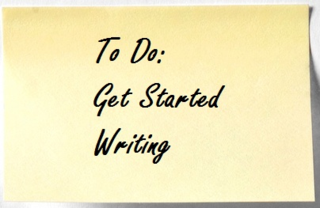 strikes for an entirely different book than the one you're working on. Unfortunately, this can create the problem of stopping one book and starting a new one so that your original work never gets finished.
strikes for an entirely different book than the one you're working on. Unfortunately, this can create the problem of stopping one book and starting a new one so that your original work never gets finished.
The odds are that the new project you started won’t get completed either, though. You'll come up with another great idea for a book and start working on that one.
Fortunately, there are plenty of ways to stay focused on writing one book:
g Limit new project ideas to note taking – If an idea comes to you for a new book, quickly jot it down and forget about it. Keep those notes in a separate folder or file. That means no research on the new book, no outlines of it, no writing character sketches, etc.
g Set a deadline – If you can write 2,000 words a day, you'll need 35 days to write a 70,000 word novel. Being realistic – you may be ill, holidays occur, emergencies with the kids happen – give yourself a few extra days. So, that means in 50 days you will complete your novel. That means no other writing can interfere with your goal of 2,000 words a day for about two months.
g Dedicate time slots – If you need two hours to write those 2,000 words, then set aside two specific hours each day in which you only work on your book. Nothing else can be written during that time.
g Bet on yourself – One wild trick I've heard some writers successfully use is to give a hundred dollars cash to a close, trustworthy, relative or friend. When you complete the novel and show it your relative/friend, then you get the money back. You need not use money; perhaps you instead agree with your spouse that if you don't complete the novel by a specific date, you will do the one chore you absolutely hate to do for the next two months.
Need an editor? Having your book, business document or academic paper proofread or edited before submitting it can prove invaluable. In an economic climate where you face heavy competition, your writing needs a second eye to give you the edge. I can provide that second eye.
Amazon.com WidgetsRelated articles
 Motivate yourself to write this year!
Motivate yourself to write this year! Five Great Quotations about Why We Must Write
Five Great Quotations about Why We Must Write Five Great Quotations about Characters
Five Great Quotations about Characters Shun beautiful writing done for beauty's sake
Shun beautiful writing done for beauty's sake Select right word to avoid reader confusion
Select right word to avoid reader confusion
January 24, 2014
Editing client’s latest novel hits top 25
The second  novel by my editing client, Jana Meador, was among the top 25 bestselling ebooks Wednesday for Children’s ebooks>Action & Adventure. Based on a true story, “Seven Lucky Stars” tells the story of a dog left to defend for himself only to find his second chance in life. Sveinn’s incredible story began in the middle of the forested mountains, where he was eventually found. His journey takes him on an unexpected adventure, where he meets his seven lucky stars. The book is available on Kindle or Barnes & Noble.
novel by my editing client, Jana Meador, was among the top 25 bestselling ebooks Wednesday for Children’s ebooks>Action & Adventure. Based on a true story, “Seven Lucky Stars” tells the story of a dog left to defend for himself only to find his second chance in life. Sveinn’s incredible story began in the middle of the forested mountains, where he was eventually found. His journey takes him on an unexpected adventure, where he meets his seven lucky stars. The book is available on Kindle or Barnes & Noble.
Need an editor? Having your book, business document or academic paper proofread or edited before submitting it can prove invaluable. In an economic climate where you face heavy competition, your writing needs a second eye to give you the edge. I can provide that second eye.
Amazon.com WidgetsRelated articles
 Editing client releases self-help book
Editing client releases self-help book Editing client publishes first fantasy novel
Editing client publishes first fantasy novel Five Great Quotations about Editors
Five Great Quotations about Editors Will you take advantage of ebook's opportunity for innovative storytelling, content presentation?
Will you take advantage of ebook's opportunity for innovative storytelling, content presentation? How to link your ebook's table of contents
How to link your ebook's table of contents



